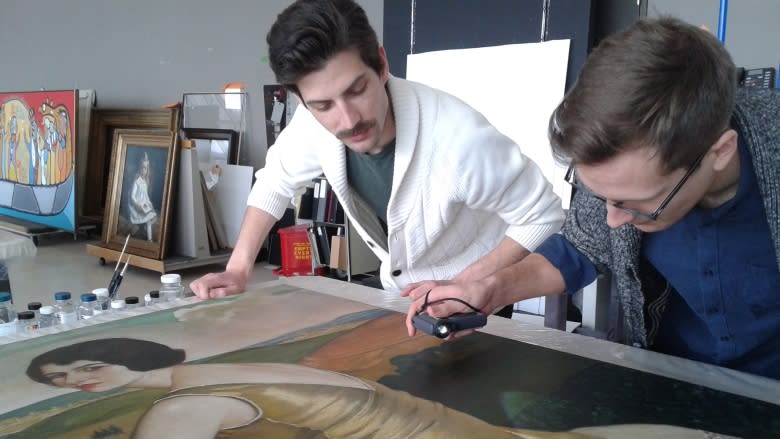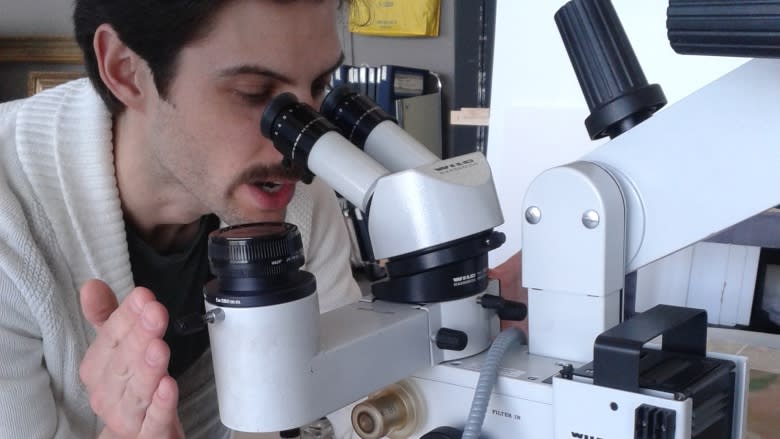Gallery team's skills stretched to mount stunning Alex Janvier exhibit
People have been flocking to the National Gallery of Canada to see Alex Janvier's paintings, with their bright colours and bold lines. The retrospective is one of the gallery's most visited winter exhibits. But what goes into prepping a show?
Before many of Janvier's paintings were mounted they passed through the hands of Spencer Montcalm, a painting conservation technician at the gallery's restoration and conservation laboratory.
Eight of the works on display came from the Janvier's own collection. The large-format pieces were rolled up for transportation and needed to be unrolled and stretched before being hung.
However as gallery workers did that they realized the paintings weren't square, so they needed to come up with a new way to stretch them for display.
"His painting style, he would staple canvases up onto a wall ... he was less concerned with how they would be displayed afterward. He was a very passionate painter, and because of that he painted right to the edges," Montcalm told CBC Radio's Ottawa Morning.
"We have to find a way to display that while respecting his ... technique, because we don't want to hide the fact that he painted that way."
Why not just hang them up the way Janvier did?
"That was one of the suggestions ... but we found a better solution, because if we were to just tack them on the wall it would be really hard to establish the proper tension," Montcalm said.
Small tears in canvas
Gallery workers getting Janvier's work ready for display also found a few tiny tears in the canvas fibre.
"It seems that he used masking tape to create really sharp lines in some scenarios, and he would have quickly cut the tape, and maybe with a knife, like a utility knife. And it seems, in a few areas on maybe one or two of the paintings ... there's a tiny little tear in the canvas of the painting," Montcalm said.
"Now that's part of the artist's technique, so again, we don't want to hide that. We want people to be able to see it ... but that creates a problem for stretching, because we need to really pull to establish tension. And if we pull too hard with those tears in the canvas, you're risking opening them up more, and that's definitely not a good idea."
The workaround? A bit of canvas was added to the back of the artwork.
"Essentially it was a patch," Montcalm said.
Listen to the full interview here to learn more about the gallery's restoration lab.




